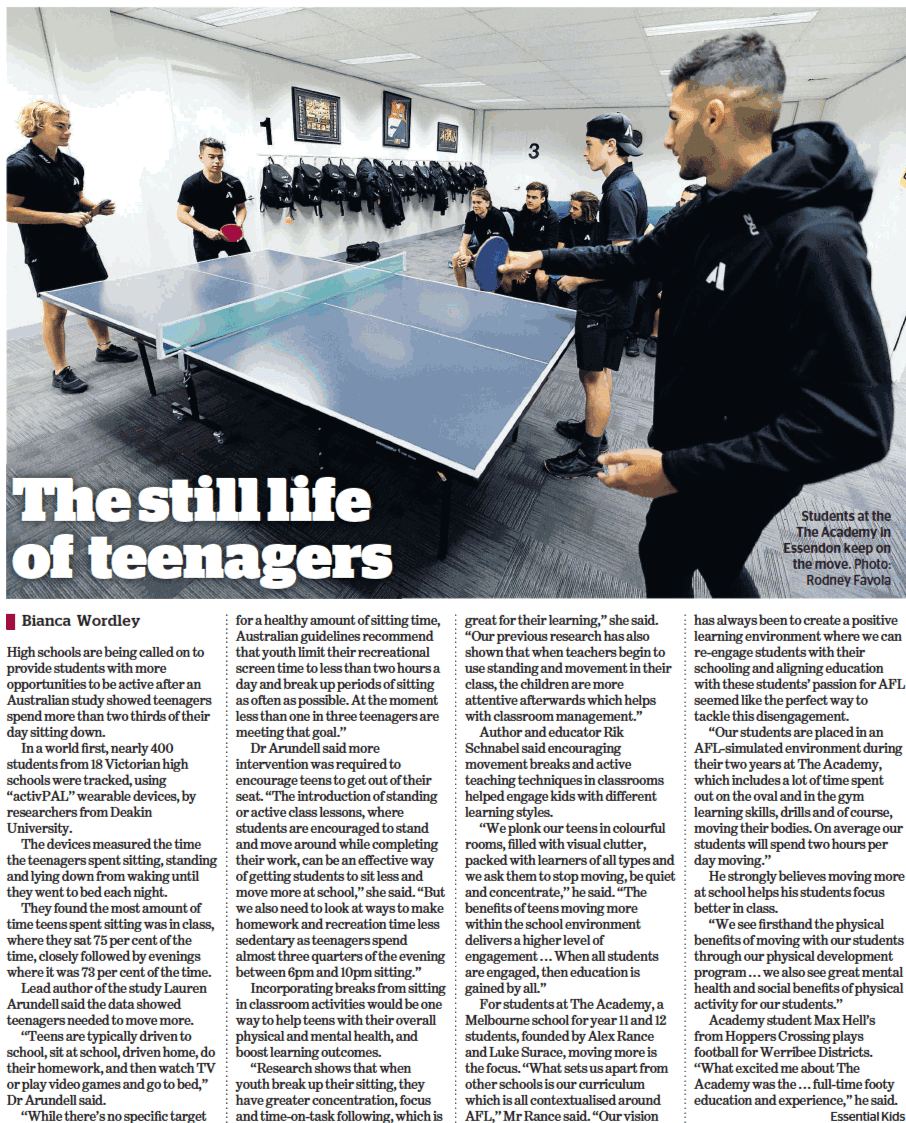
High schools are being called on to provide students with more opportunities to be active after an Australian study showed teenagers spend more than two thirds of their day sitting down.
In a world first, nearly 400 students from 18 Victorian high schools were tracked , using “activPAL” wearable devices, by researchers from Deakin University.
The devices measured the time the teenagers spent sitting, standing and lying down from waking until they went to bed each night.
They found the most amount of time teens spent sitting was in class, where they sat 78 percent of the time. Lead author of the study Lauran Arundell said the data showed teenagers needed to move more.
“Teens are typically driven to school, sit at school, driven home, do their homework, and then watch TV or play video games and go to bed,” Dr Aundell said.
“While there’s no specific target for a healthy amount of sitting time, Australian guidelines recommend that youth limit their recreational screen time to less than two hours a day and break up periods of sitting as often as possible. At the moment less than one in three teenagers are meeting that goal.”
Dr Arundell said more intervention was required to encourage teens to get out of their seat. “The introduction of standing or active class lessons, where students are encouraged to stand and move around while completing their work, can be an effective way of getting students to sit less and move more at school,”she said. “But we also need to look at ways to make homework and recreation time less sedentary as teenagers spend almost three quarters of the evening between 6pm and 10pm sitting.”
Incorporating breaks from sitting in classroom activities would be one way to help teens with their overall physical and mental health, and boost learning outcomes.
“Research shows that when youth break up their sitting, they have greater concentration, focus and time on task following which is great for their learning,” she said. Our previous research has also shown that when teachers begin to use standing and movement in their class, the children are more attentive afterwards which helps with classroom management.”
Author and educator Rik Schanbel said encouraging movement breaks and active teaching techniques in classroom helped engage kids with different learning styles.
“We plonk our teen in colourful rooms, filled with visual clutter, packed with learners of all types and we ask them to stop moving, be quiet and concentrate,” he said. “The benefits of teens moving more within the school environment delivers a higher level of engagement … When all students are engaged, then education is gained by all.”
For students at The Academy, a Melbourne school for year 11 and 12 students, founded by Alex Rance and Luke Surace, moving more is the focus. “What sets us apart from other schools is our curriculum which is all contextualised around AFL,” Mr. Rance said. “Our vision has always been to create a positive learning environment where we can re-engaged students with their schooling and aligning education with these students’ passion for AFL seemed like the perfect way to tackle this disengagement.
“Our students are placed in an AFL-simulated environment during their two years at The Academy, which includes a lot of time spent out on the oval and in the gym learning skills, drills and of course moving their bodies. On average our students will spend two hours per day moving.”
He strongly believes moving more at school helps his students focus better in class.
“We see firsthand the physical benefits of moving with our students through our physical development program … we also see great mental health and social benefits of physical activity for our students.”
The Academy student, Max Hell’s from Hoppers Crossing and plays football for Werribee Districts. “What excited me about The Academy was the … full time footy education and experiences ,” he said.


